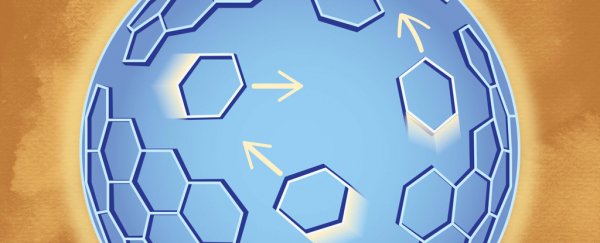For the first time, the structural protein lattice that allows viruses like HIV to form has been revealed to be a moving, dynamic system, giving researchers insight into a hidden nanoscale process that might one day enable the development of new virus-blocking treatments.
Using modelling in conjunction with a microscopy technique called interferometric photo-activated localisation microscopy (iPALM), researchers have visualised how HIV virus-like particles (VLPs) take shape in real-time, moving beyond the limitations of static electron microscopy methods that require samples to be frozen still for analysis.
"Apart from the virus, a major implication of the method is that you can see how molecules move around in a cell," says lead researcher and physicist Ipsita Saha from the University of Utah.
"You can study any biomedical structure with this."
In the study, Saha and her supervisor, Saveez Saffarian, examined the molecular configurations of protein structures that enable virions (independent viral particles) to become mature.
When an enveloped virus like HIV replicates, it goes through a process called budding, co-opting components of infected cells, in order to help produce and release a new virion particle capable of infecting another cell.
"Viruses are entities that are unable to replicate on their own," Saha explained in April, "so they hijack the cellular machinery to replicate, turning the cell against itself."
During this budding process, a viral envelope made of various proteins emerges from the infected cell. In the case of HIV, the most important protein is called Gag, which makes up most of the particle's structural lattice frame.
This structural lattice has mostly been considered from a static perspective before now, due to microscopy limitations, but the new study could help researchers to understand how the virus maturation plays out dynamically.
In addition to Gag, another important protein that makes up the HIV structure is called GagPol, which itself houses an enzyme called protease that helps trigger virus maturation through a molecular bonding process called dimerisation.
Just how the relevant molecules in HIV found one another as part of dimerisation has never been fully understood, but the new research offers an explanation.
Thanks to a combination of techniques, including multiple types of molecular tagging and a time-lapse analysis, the team's experiments suggest the virus lattice is made up of proteins that are dynamic, not static, and capable of assembling themselves randomly if they come into proximity with one another within a moving system.
While the experiments only looked at VLPs that don't fully replicate the HIV genome, the team says it's possible we could use the same techniques to explore what the real virus is actually doing.
"It is plausible that lattice dynamics within the immature lattice of the fully infectious virions can play a role in the initial protease dimerisation and consequently its activation," the authors write in their paper.
"Further studies within the immature lattice of the fully infectious virions should be able to further shed light on these mechanisms."
If future work can replicate these dynamic structures in HIV, we could take a big step closer to understanding HIV's molecular maturation, and in doing so, perhaps learn how to stop it from becoming infectious.
"It opens up a new line of study," says Saha.
"If you can figure out that process, maybe you can do something to prevent them from finding each other, like a type of drug that would stop the virus in its tracks."
The findings are reported in Biophysical Journal.
